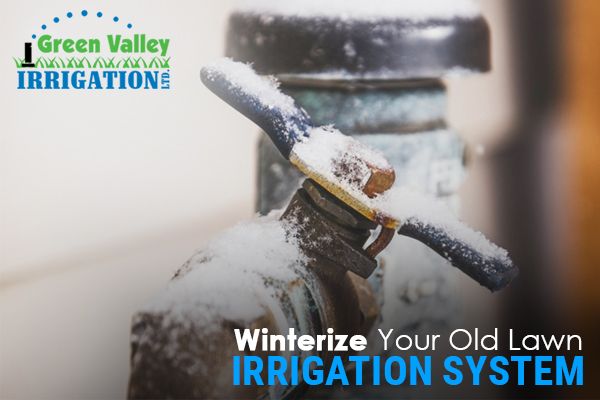Winter is already striking hard and it is high time to winterize your home and lawn. You may not realize the importance of winterizing your irrigation system when you are from an area that rarely experiences extreme cold weather. But this is an important thing to do to maintain the irrigation system properly. Like any other part of the house, the lawn and irrigation system should be-winterized before the winter sets in.

Necessity to winterize
Garden irrigation systems are usually made of PVC or polyurethane pipes, which tend to crack when water freezes inside them. To winterize the irrigation system, it has to be drained of all residual water. If your watering system is old, you need to take good care of it to make sure it gives you the best utility. You will have to replace the broken parts during spring if you do not winterize the watering system. This is more of a preventive measure against any kind of damage to the mechanism.
This post outlines the important things to do so that your irrigation system does not suffer any damage during the winter.
Insulate the system
To insulate the portions of the irrigation system above the ground:
Shut down the main source of water supply.
The primary valve should be protected from freezing and it can be insulated using foam insulation tapes and a plastic
When you do not have a main valve to shut off, investing in one is a great preventive measure that you can take before the winter.
Any pipes which are above the ground must be insulated as well.
Self-sticking foam tapes or foam insulating tubes can help you to prevent the pipes from freezing.
Deactivate using the controller
Most types of irrigation and sprinkler systems are automated and have to be deactivated accordingly.
There is a timer in most automated systems which have to be deactivated first.
The digital controller has to be turned off during the winter months. The information on the system will not be lost even when the power is cut off for the time being.
If the controller is connected to a pump, it is best to remove the wires connecting it to the master valve and any other common terminal as a precaution.
When you have a manually controlled irrigation system, simply turning off the valve is sufficient. There is no stored data in such a system hence, you shouldn’t worry about losing the programmed data.
Drain the irrigation system
Different parts of the irrigation system have to be completely drained of water before the winter comes. This can be done in three different ways, namely- manual draining, automatic draining, and the blow-out method.
Manual draining is used when there are manual valves located at the ends and the low points of the piping. The regular water supply has to be shut off and the manual drain valves should be opened. Once the water is drained from the pipes, open the boiler drain valve located on the stop and waste valve to drain the residual water. The location of the drain valves can give you an idea if there is any water left due to back-flow in the piping and the sprinkler. Once you are sure that all water has been drained out, close all the drain valves.
Automatic draining is done for automatic drain valves. When the pressure is lower than 10PSI, the water draining happens automatically. You will have to shut off the water supply to the system to activate the draining process. The water will be drained out of the mainline first and then you have to open the boiler drain valve and the drain cap so that the remaining water is drained. In certain parts of the irrigation system, a combination of manual and automatic system are used and it must be drained
Blow-out draining must be executed with precaution. Compressed air is used to blow all the residual water out of the irrigation system in this process. Eye masks should be used during the procedure as compressed air can cause serious injury, particularly to the eyes. It is best to utilize professional contractors when you want to use this method to ensure it is executed safely.
An air compressor hose is attached to the system while the compressor valve is in the closed position. The air is gradually introduced into the system and it blows out the water. Once the blow-out is done thoroughly, the air compressor should be disconnected and the air pressure is released entirely.
| Take note:
The blow out pressure should not exceed the maximum operating pressure specification and should never exceed 80 PSI.
|
Insulate backflow prevention device and rain sensors
Some of the backflow prevention devices and valves will be above the ground, and they should be insulated as well before the winter sets in. However, make sure that the air vents and the drain outlets of the back-flow prevention device are not blocked while insulating them.
If you have rain sensors, there is not much to do except cover them up with a plastic bag. If they have a container attached to it to collect the rainwater it should be removed to prevent water from freezing inside them.
Winterization of the irrigation system has to be done carefully to ensure your water system does not get damaged during the cold season. Seek professional help to best execute the process. Not only can they take care of your old irrigation system and increase its life-span but also suggest necessary repair or replacement work. At Green Valley Irrigation, we have experts who can help you out with this. Book an appointment today any time during business hours.

